What some people don’t realize is that an algae filled pool can damage your pool surfaces. Stains of course, but over time, algae and poor water chemistry will begin to erode the pool plaster, with etching and deposits, and weaken vinyl liners, making them brittle and old before their time.
If you just now took the cover off of the pool, in late June, and you have a dark green pool – there are some good solutions for you below. If this is more than just a late pool opening, but a pool neglected for months or years – we have solutions for you also.
Neglected or abandoned pools are also a problem from a health and safety standpoint. When not protected by a safety cover, they become a safety hazard for humans and animals, and stagnant water will attract mosquitos which could bring disease to the community.
To Drain or Not to Drain?
Algae filled pools can have varying levels of suspended material, and debris on the bottom and floating on top. If you can see the shallow end floor, even if just barely – you can probably bring it back, with lots of chemicals, cleaning and filtering. If you can only see down 12-18″, and there is a lot of debris in the pool, trying to bring it back without at least partially draining will be a long road.
Drain Your Pool
A lot of homeowners are nervous about draining the pool, having heard horror stories of pools that have popped out of the ground. And yes, that can happen, but not if you drain the pool properly.
- Rent or borrow a submersible pump, and discharge hose to reach the street, storm drain or downhill slope
- Check the weather before draining, heavy rain storms increase the risk of hydrostatic pool problems
- On plastered pools, when draining completely, open a few hydrostatic relief valves in the pool floor and drain
- Plastered pools can be pressure washed or acid washed, Vinyl pools should use water and a soft brush
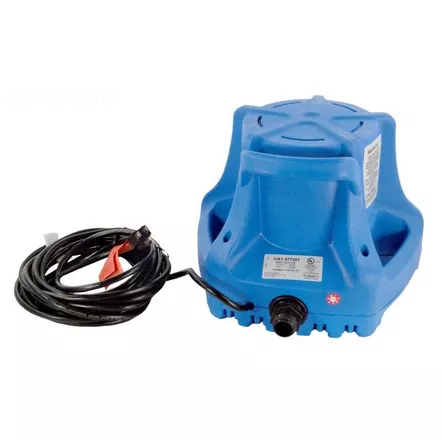
If your algae filled pool has a main drain, you can usually drain most of the water out, using the filter pump. Just close off the skimmer valve(s) before the water level gets to the bottom of the skimmer, and let it continue to pump out the waste line, using the main drain. It’s common however, that at some point before being fully empty, the pump will lose prime. At best, it will stop with about a foot of water over the main drain.
Draining the pool can save a lot of time and money. With a small submersible pump, and enough discharge hose to pump downhill or to a storm drain, you can drain most pools in 12-24 hours. Larger, gas powered pumps can also be used, which can drain a pool in 1-3 hours. A faster draining is preferred, to allow you to hose off the walls while it drains, to prevent dried on dead algae from baking in the sun. Use enough discharge and direct the water far enough away so that it’s not coming to rest under the pool.
For Vinyl Pools
Drain it down to the bottom step in the shallow end and refill the pool. If necessary, repeat the process until your pool is mostly blue, or just a light shade of green. If you drain it down too close to the shallow end floor, the liner may relax and you may have trouble resetting the liner correctly again, so only drain about half the pool. The same rule applies to fiberglass pools, although maybe a 1/3 rule would be more appropriate.
For Homes with Wells
Many homeowners with wells are concerned that they may ‘burn up the well pump’, or ‘drain the well’ if they use it to fill a swimming pool. Last week a homeowner told me of his plans to pump water out of a stagnant pond, rather than use his well! I’m telling you, in most cases there is no need for concern. It’s no different than running the lawn sprinkler all day, and I’ve never seen a well run dry filling a pool, in all my years.
Filling from a Truck
Many areas have a local service for pool water delivery, 5000 gallons at a time. This can be very expensive at about $250 per load, but for those with very weak wells, or water with very high mineral content, it can be a good option.
Water Restrictions
For those areas that have water restrictions in place which prohibit draining of the pool, there are pool water recycling companies that will pump out your pool water into their mobile reverse-osmosis filters, and refill the pool with clean and balanced pool water.Otherwise, follow these steps below.
Don’t Drain Your Pool
Cleaning up a dark green, algae filled pool without draining may not be optimal, but if you are unable to drain the pool, here are some tips on how to successfully restore blue pool water. Depending on factors like water temperature, the amount of solids in the pool, and the capabilities of your pool filter system, the process can take 3 days or 3 weeks.
Start up the Filter
Without a properly working filter, the water will never clear. During the first week, you may need to backwash daily, or several times per day, and also empty the pump and skimmer baskets. Run the filter 24 hours per day. If you are worried about the filter pressure rising too high during the night, or while you are away at work, set a multiport valve on recirculate during these times.
Clean the Pool
This is the first step, vacuuming to waste, skimming, and brushing the pool. Allow the pool to filter overnight, and repeat the process the following day. Try to remove all of the debris, algae and dirt that is in the pool – before you move on. It will make the process much easier if there are not leaves and sticks on the bottom of the pool, and floating on the surface. Keep at it daily during the process.
Balance the Chemistry
The next step should also be given ample time, don’t rush through balancing, but test the water, adjust as needed, and allow the pool to filter for 8 hours before re-testing and re-balancing if necessary. Keep an eye on the filter pressure, and backwash when it rises 8-10 lbs on the gauge.
Shock & Floc

With your pH on the low side, around 7.3, shock the pool with enough bleach or granular chlorine to turn the pool a milky shade of blue. Depending on the amount of algae in the pool, and other organic debris, you may need 2 to 4 lbs of granular shock or 2-4 gallons of bleach – per 10,000 gallons of pool water. Test your chlorine level the following day, and if it’s low, or if the pool has returned to a greenish color, shock the pool again. Continue to filter the water 24 hours per day, backwashing as needed.
A few days after shock treatment, if your pool clarity has not begun to return, you may wish to use a pool flocculent like Super Floc to settle suspended particles to the pool floor. It’s best to be able to vacuum to waste, through a multiport valve – the settled hydroxides form a gelatinous layer on the floor, which clogs up filters fast when vacuuming.
Brush the Pool
With all of your might, brush your algae filled pool vigorously. Repeat the process again every 8-12 hours, to kick up the dust, and continue to remove dead algae from the walls and floor. Brushing daily during the process will also help to remove stains on the pool surfaces. Vacuum the pool carefully to remove dead algae and shock dust. Vacuum to waste if you see it passing through the filter, or clogging up the filter too quickly.
Clean the Filter
Your pool filter can harbor the cells of dead algae, or not-quite-dead algae, which can cause the algae to return. Use a filter cleaner product to help flush out trapped material, or consider replacing filter sand or filter cartridges, after you have cleaned up the water.
Stain Removal
Many stains will lighten over the next few weeks, with high chlorine levels and plenty of sunshine. To accelerate the process, or for tough pool stain removal, you may want to use some pool stain remover chemicals, such as A+ Stain Remover.




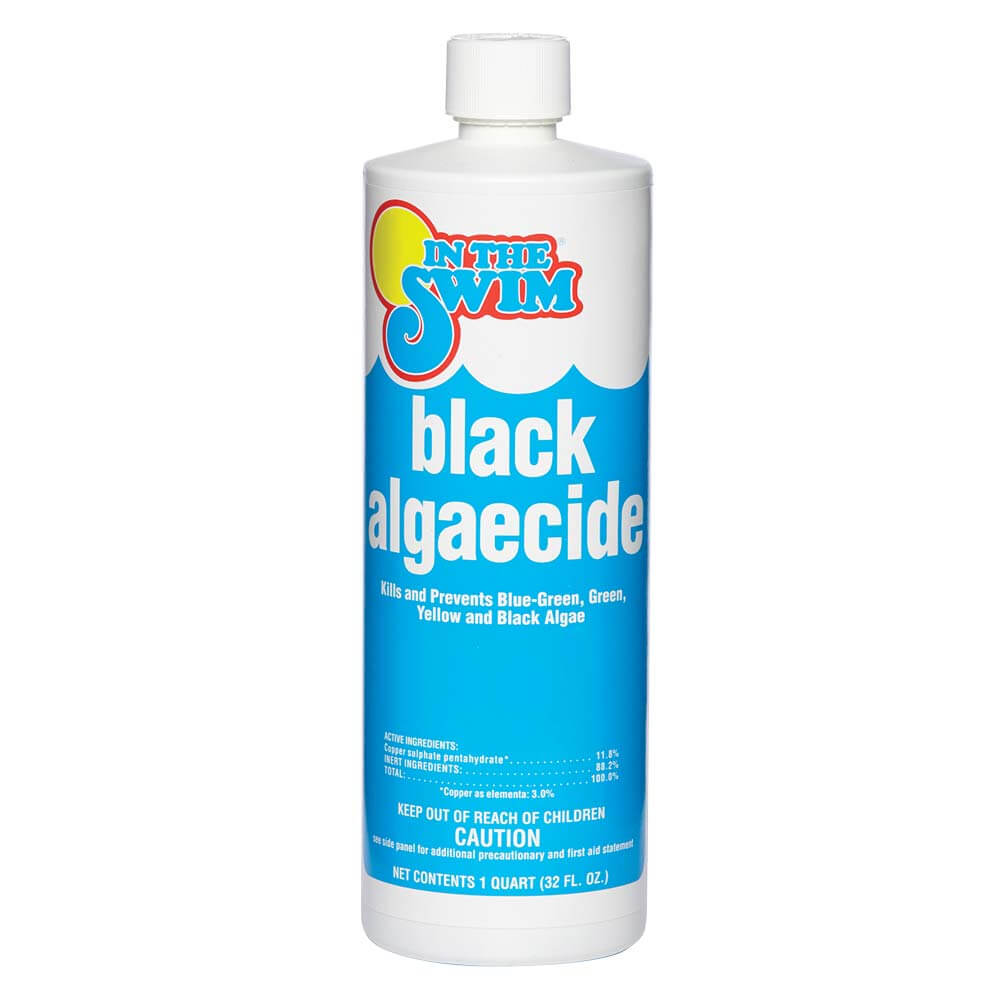
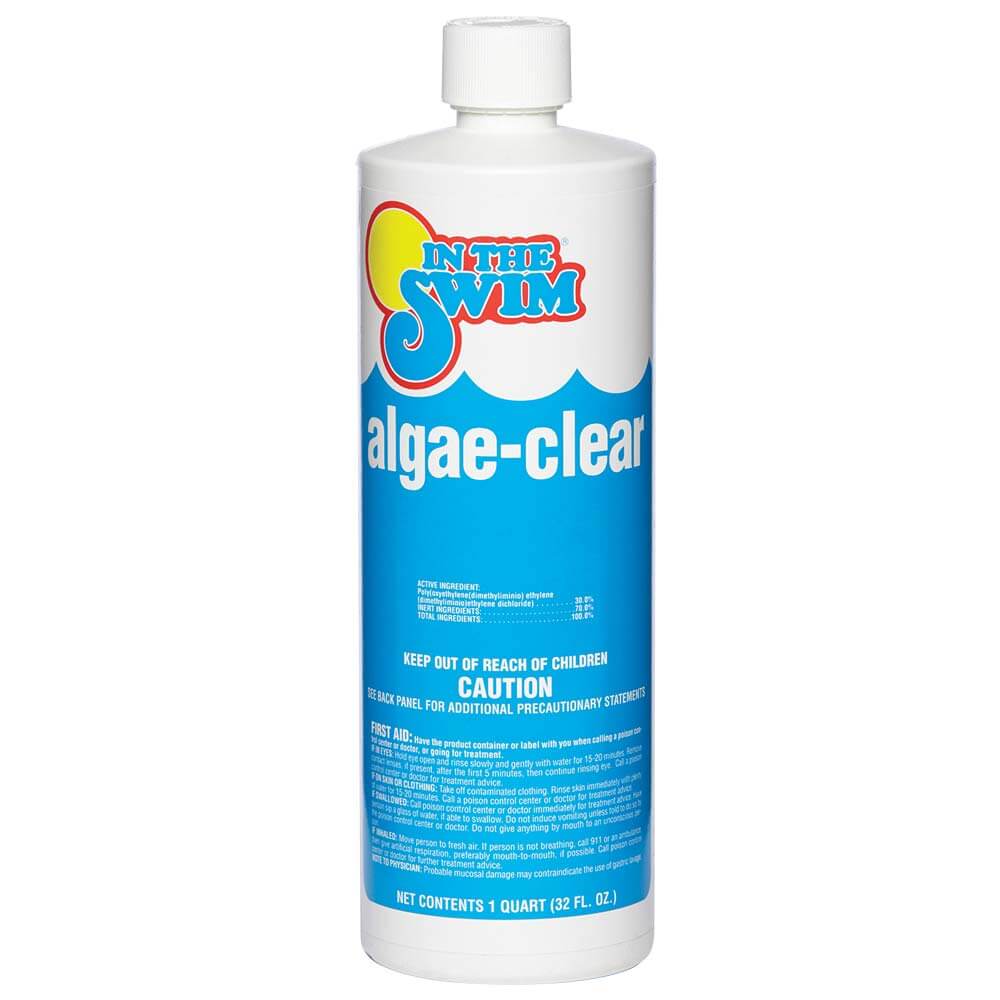
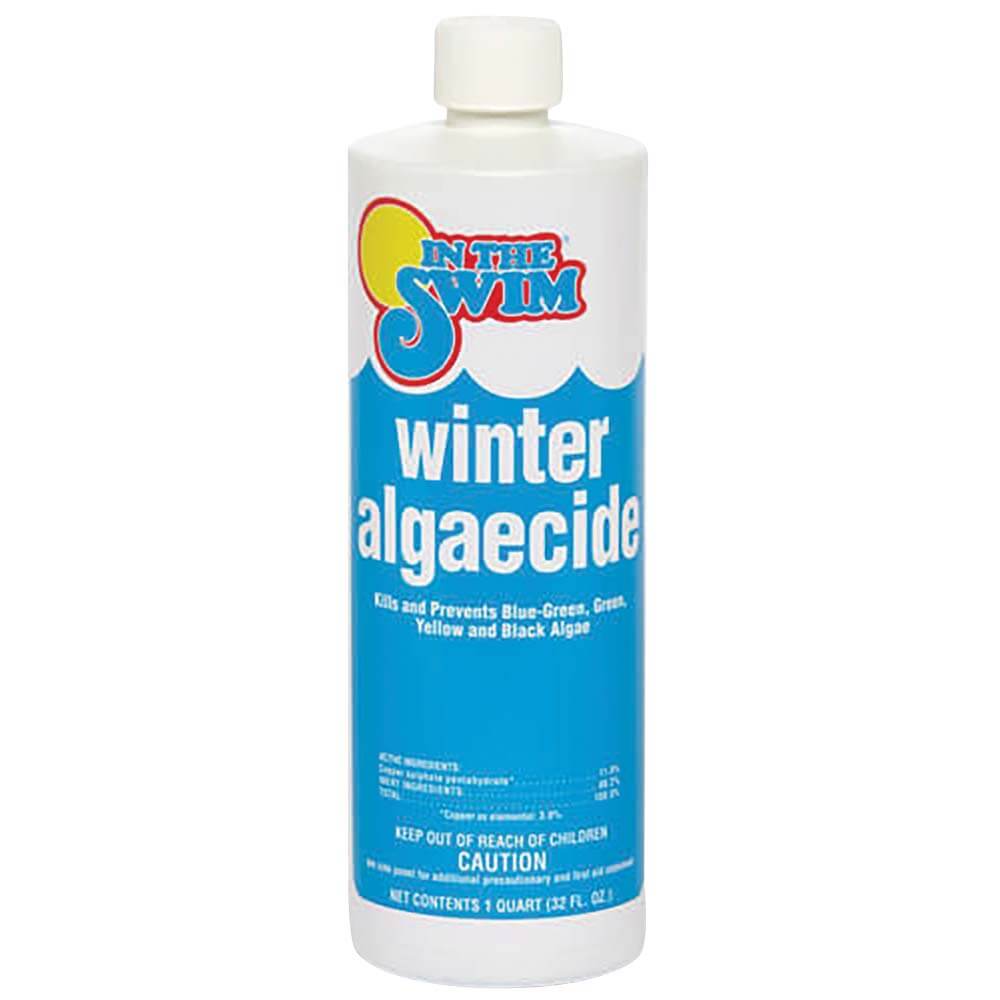
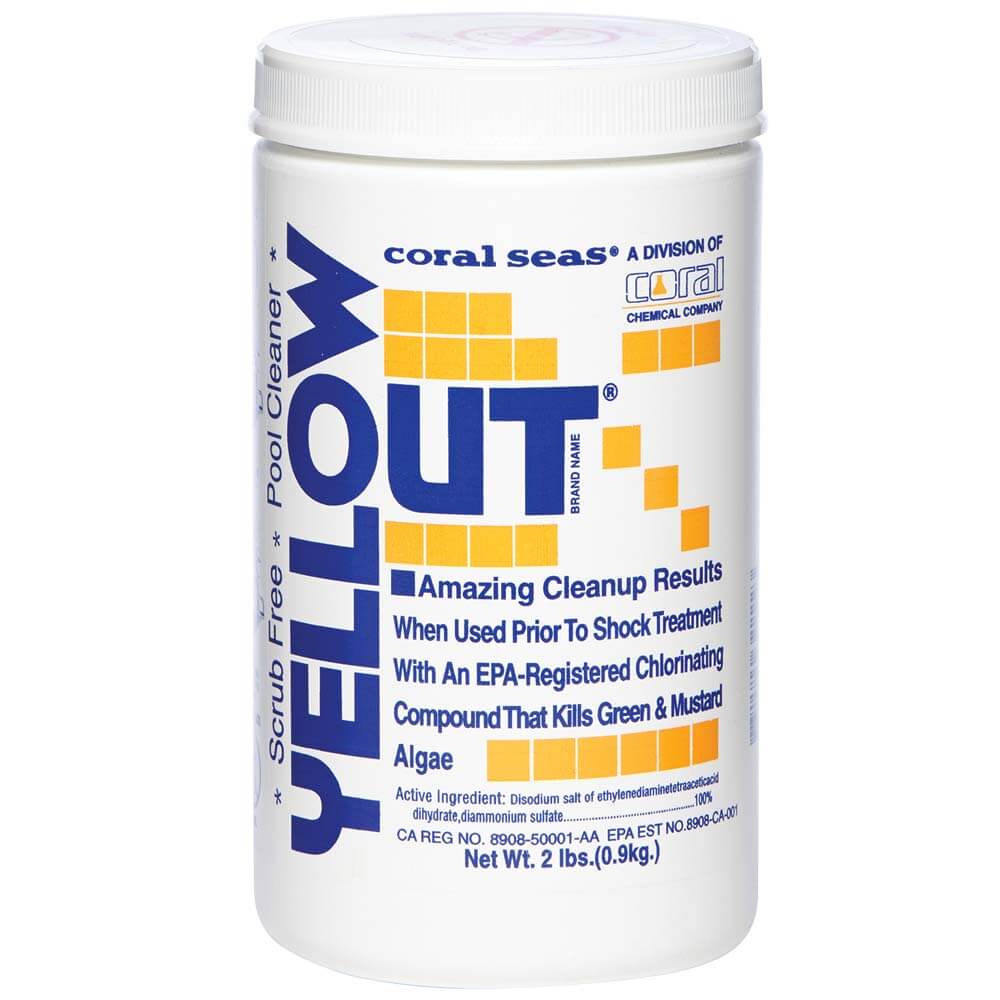
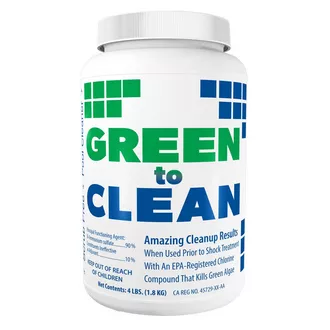
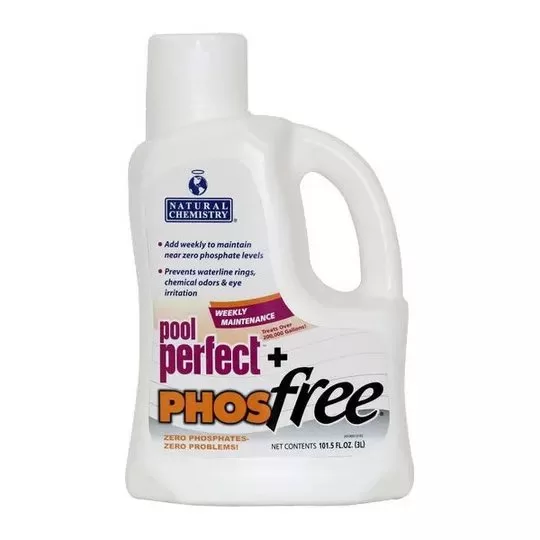

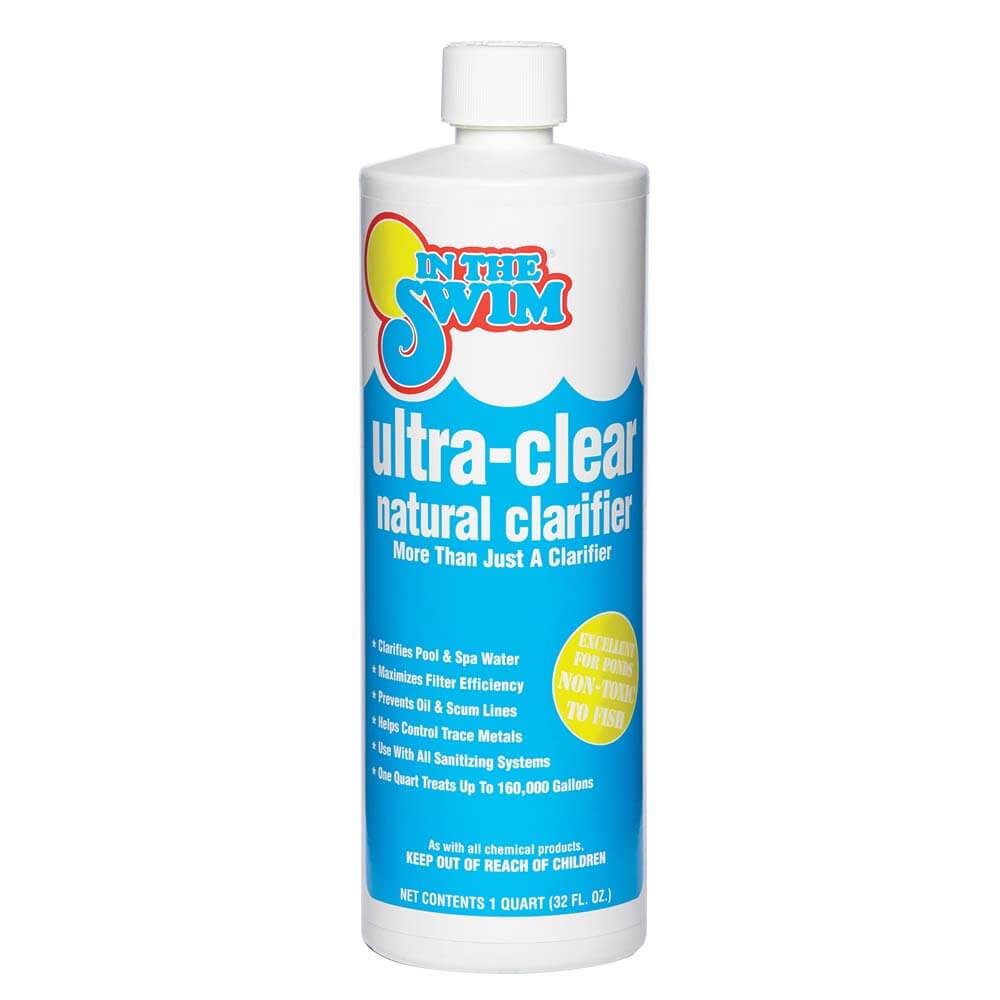
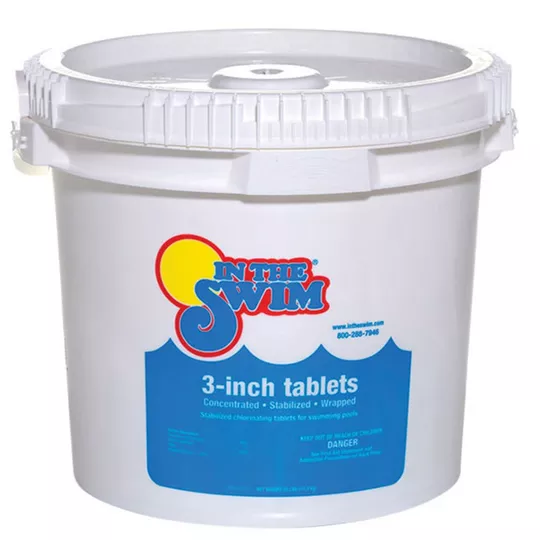
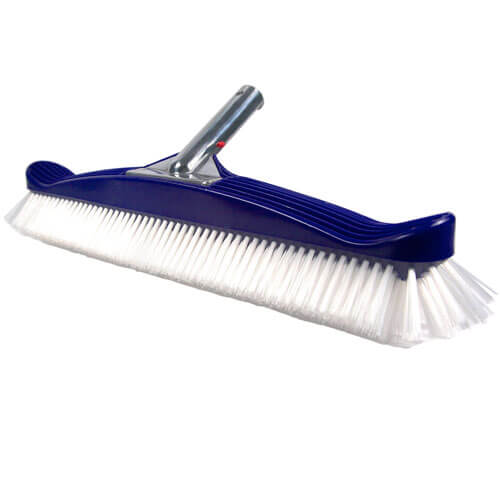
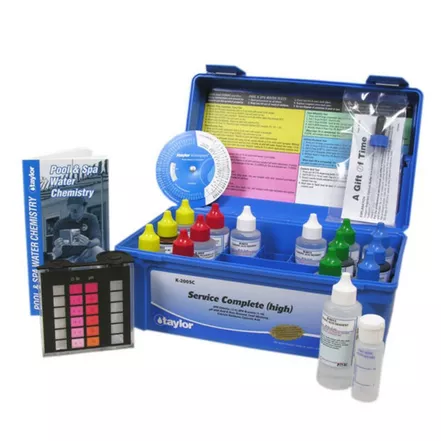
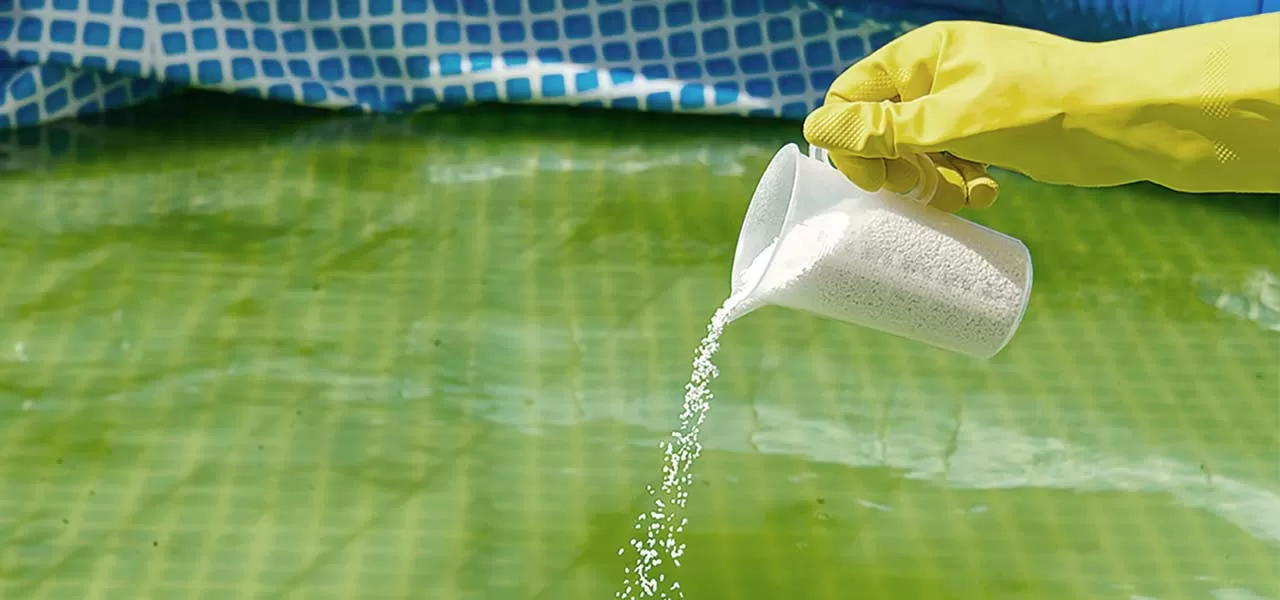
Do you recommend an algaecide for plaster pools? I plan on draining then acid washing then painting.
Yes, if you are going to use algaecide, use the very best. Something with 60 in the name. Like our Algaecide 60 plus.
I want to drain my in-ground cement pool due to serious neglect for over 3 years. Additionally, there is a leak in a water line, the skimmers are not working and the filter is extremely old. My goal is to drain, clean and slowly repair all the damage. However, I’ve been told that a normal sump pump is not recommended and that I should get a sewage pump. Any advice on the type of pump and how to fully drain this pool would be appreciated.
Yes, rent a small trash pump, a 5-hp with 2″ suction and discharge hoses, is big enough to get the job done, but small enough to be manageable. You can get at any rental shop, just tell them you are draining a pool, so you need a suction hose long enough to reach the main drain pot (15 ft should do it) and figure out how much discharge hose you need (50 ft, 100 ft, more?)
Shock, brush, clean filter(paper) multiple times a day. Works every time. Have never drained pool. 10,000 gal. Cleaning filter is most important.
I’m about to drain my pool -10×5 in-ground with liner – in order to throughly clean everything and treat green algae which seems to have been getting worse for the last few years. The pool is 10 years old and has never had the water replaced.
It has been suggested to me that rubbing down the walls and floor with an anti-algae solution before re-filling is a good idea. Do you agree and if so is there any particular product that you would recommend?
Thanks in advance,
Hi Dennis, for a vinyl pool… I have never heard of treating the vinyl with algaecide, as the surface is so smooth, it should all come off with a high pressure garden hose spray, and some scrubbing.